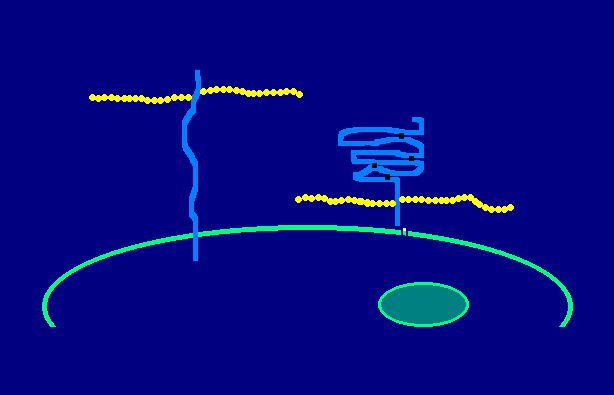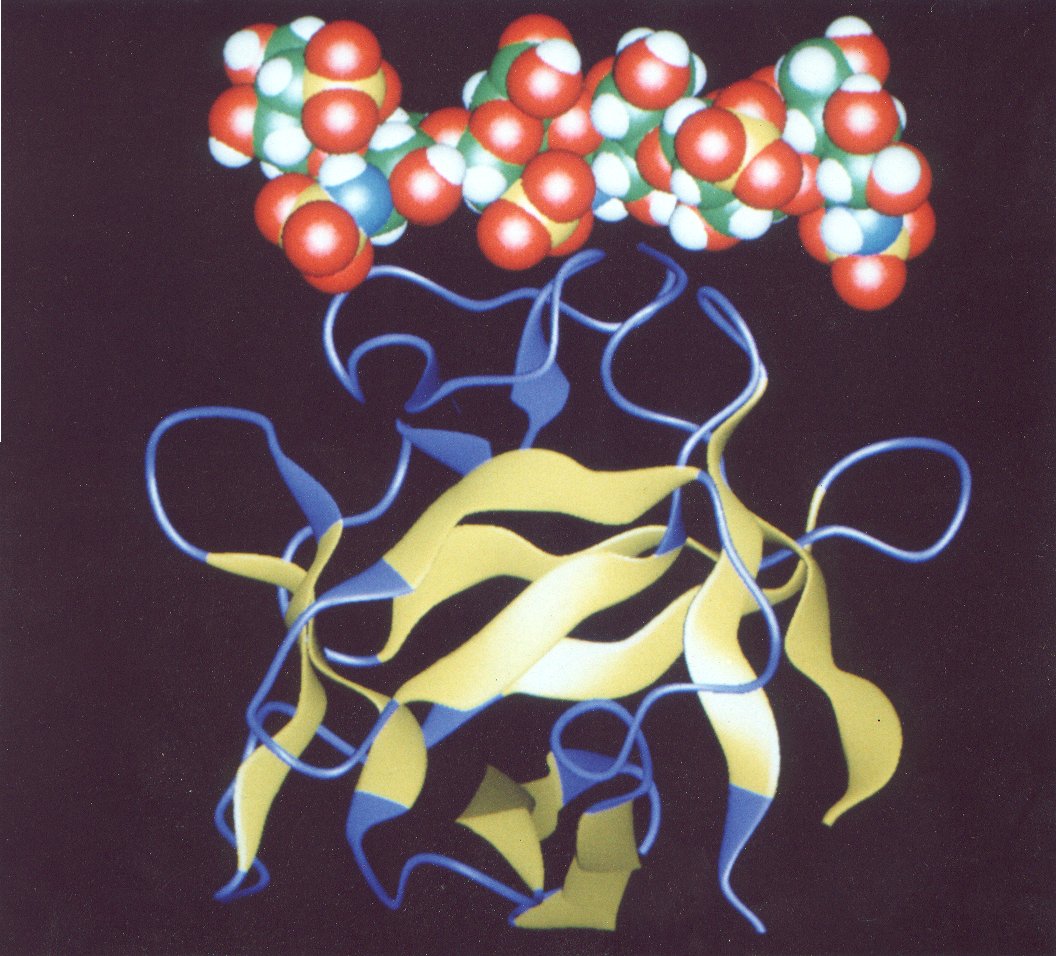Heparan Sulphate
Heparan Sulphate Proteoglycans
The extracellular matrix (ECM) surrounding
cells
plays important roles in the regulation
of cell
behaviour, and one of its components,
the family of
glycoproteins known as heparan sulphate
proteoglycans (HSPGs),
have critical functions as co-receptors
for growth
factors and matrix proteins. The
heparan sulphates (HS)
are complex linear sulphated polysaccharides
present on
the cell surfaces and in the extracellular
matrix of most
mammalian cells, normally attached
to core proteins to
form HSPGs. The general area of research
interests of my
lab is the glycobiology of HSPGs
in cell-cell/cell-matrix
interactions and growth factor signalling.
Neuroglycobiology of Heparan Sulphate Proteoglycans
An aspect of the pathology of many diseases
is the
aberrant activity of growth factors
(eg. atherosclerosis,
tumour growth and metastasis, neuropathies)
and they are
also intimately involved in normal
repair processes (eg.
wound and tissue healing, nerve regeneration,
angiogenesis). Our studies are generating
important new
information on the carbohydrate recognition
sequences
involved in the interaction of HS
with peptide growth
factors, and the mechanisms underlying
its critical role
in regulating their signal transduction
and biological
activities. In particular, there
is a growing body of
literature indicating important neurobiological
roles for
HSPGs, including for example neuroepithelial
growth and
differentiation, neurite
outgrowth, nerve regeneration, axonal
guidance and
branching, deposition of amyloidotic
plaques in
Alzheimer's disease and prion diseases
and astrocyte
proliferation. Many of these functions
appear to relate
to modulation of the activity of
neuroregulatory growth
factors.
Heparan Sulphate Proteoglycans: Structure/function
studies.
The time is now ripe for detailed structure/function
studies on the HS expressed in neural
tissues,
particularly as the advent of practicable
approaches for
direct sequencing of complex HS saccharides
(developed in
our lab) will now permit rapid advances
to be made. New
information on bioactive sequences
are being translated
into biological testing of HS saccharides
and chemical
analogues which mimic or antagonise
the functions of HS.
It is envisaged that this will lead
to the development of
agents which target these specific
molecular interactions
that control cell growth, development
and tissue repair.
In the future these agents could
be exploited in the
development of novel therapeutic
approaches.

